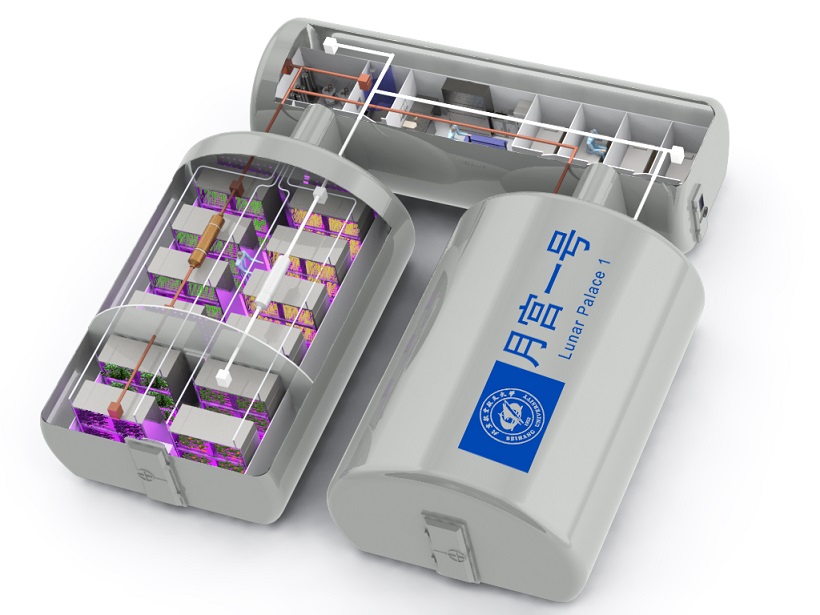I started this blog with a series of articles about the ambitions of China in space exploration and exploitation. They are currently working on an Earth orbit space station and returning men to the Moon to staff a permanent lunar base. One part of their preparations is having people live in a simulated Moon base on Earth.
Four post-graduate students from Beihang University in Beijing will take part in the experiment. The two men and two women will enter the “Yuegong-1” (or Lunar Palace-1 in English) this week for an initial stay of sixty days. Another group will enter the Lunar Palace for a two hundred day stay after the first mission. Following that, the original quartet will return for another one hundred and sixty day mission. The Lunar Palace was used for a successful trial in 2014.
The Lunar Palace is a seventeen hundred square foot cabin. It has two plant cultivation modules, a living area, four bed cubicles, a common room, a bathroom, a waste treatment room and a room for raising animals. The Lunar Palace will be sealed after the volunteers enter and there will be no inputs from the outside world. Human wastes will be treated with a bio-fermentation process. Crops and vegetables will be grown with food and human waste byproducts. Chinese state media says that the Lunar Palace is the "world's most advanced closed-loop life-support technology so far."
One of the volunteers said “I will be in charge of the treatment of solid waste, urine, shredding straw, threshing wheat, processing food and other work." He went on to say that other members of the team will have responsibilities for growing crops, monitoring the health of the crew and handling supply inventory.
There have been two other bioregenerative life-support base experiments in the U.S. but the Lunar Palace is the first such base in China. The Lunar Palace is the first bioregenerative life-support base which includes microorganisms, plants, animals and humans.
Although China’s plans for a lunar colony do not call for a manned flight to the Moon for another decade, the Lunar Palace is part of a program to prepare astronauts for extended stays on the Moon. China is putting billions of dollars into space missions as it races to catch up with the U.S. and Europe which both have plans to set up manned bases on the Moon by 2022. China places great symbolic significance in its space program. It feels that China’s global status is connected to its success in space exploration and exploitation.
As I wrote in a recent post on this blog, China is very interested in participating with the European Space Agency in the creation of a “Moon Village” by 2022. This would be a manned lunar base created by a consortium of nations along the lines of the International Space Station. If China does join the Moon Village project, then the lessons learned from the Lunar Palace experiment could prove to be useful even before China established its own lunar base.
